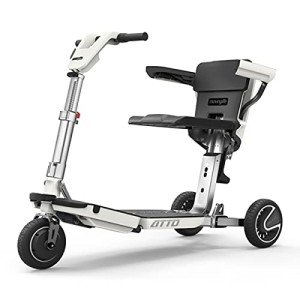It's The Myths And Facts Behind Mobility Aids

Understanding Mobility Aids: Enhancing Independence and Quality of Life
As society continues to age and people increasingly look for ways to maintain self-reliance, the demand for mobility aids has never ever been more essential. Mobility aids, which incorporate a variety of devices created to assist individuals with strolling or moving, play an important function in promoting mobility, boosting safety, and enhancing general quality of life. This blog post will explore the different types of mobility aids, their benefits, factors to consider for choice, and address some regularly asked concerns.
Kinds Of Mobility Aids
Different mobility aids are readily available, each created to resolve particular needs. disabled scooters following table summarizes some of the most typical kinds of mobility aids and their functions.
| Kind Of Mobility Aid | Description | Best Suited For | Key Features |
|---|---|---|---|
| Walking sticks | A handheld stick offering support and balance. | People who need very little assistance. | Light-weight, portable, adjustable height. |
| Walkers | Four-legged frames supplying stability. | Those requiring significant assistance while strolling. | Foldable, some with wheels, added safety functions. |
| Rollators | Wheeled walkers with a seat for resting. | People needing mobility with the alternative to rest. | Brakes, baskets for personal products, adjustable height. |
| Wheelchairs | Chairs with wheels for people with restricted mobility. | Those unable to stroll or needing extensive assistance. | Manual or powered alternatives, customizable seating. |
| Scooters | Motorized devices for bigger ranges. | Individuals with restricted stamina but requiring independence. | Various sizes and designs, typically portable. |
| Crutches | Support devices positioned under the arms or lower arms. | People recuperating from lower limb injuries. | Adjustable, lightweight, requires upper body strength. |
| Stairlifts | Mechanical devices for moving in between floors. | Users facing challenges in multi-level homes. | Customizable for different staircases, automated. |
Benefits of Mobility Aids
Mobility aids provide a selection of advantages that can substantially enhance the lives of individuals dealing with mobility difficulties. Some noteworthy advantages consist of:
- Increased Independence: Mobility aids empower individuals to move freely without relying on others for support, thus enhancing their confidence and self-esteem.
- Improved Safety: Using mobility aids can decrease the risk of falls and injuries, especially for older adults or those with balance issues.
- Enhanced Quality of Life: By facilitating mobility, people can engage in social activities, participate in occasions, and delight in life more completely, contributing to better emotional and psychological health.
- Rehab Support: After surgery or injury, mobility aids provide required support and stability, helping in recovery and rehab processes.
- Ease of access: Many mobility aids are developed to be used both indoors and outdoors, ensuring that people can browse various environments with ease.
Aspects to Consider When Choosing Mobility Aids
Selecting the suitable mobility aid needs mindful consideration of numerous elements, consisting of:
| Factor | Considerations |
|---|---|
| User's Needs | Examine the level of mobility required; think about whether the user requires short-lived or long-term help. |
| Physical Limitations | Examine the user's strength, balance, and coordination to determine the very best kind of help. |
| Setting | Think about the primary environments where the help will be used, such as home, outdoors, or particular surfaces. |
| Weight and Portability | Make sure that the picked device is workable concerning transportability and storage, particularly for outside use. |
| Budget | Mobility aids been available in a variety of rates; think about insurance protection and readily available funding choices. |
| Adjustability | Select aids that can be adjusted for height and convenience to accommodate growth or altering requirements. |
Often Asked Questions About Mobility Aids
1. How do I understand if I require a mobility aid?
Numerous aspects can signal the requirement for a mobility aid, such as difficulty walking or balancing, tiredness while standing, or a current surgical treatment affecting mobility. Consulting with a healthcare specialist can provide guidance tailored to private needs.
2. What kinds of mobility aids are covered by insurance coverage?
Protection varies between insurance providers, however most offer choices for resilient medical devices, which usually consists of wheelchairs, walkers, and some types of walking sticks. Consult your insurance coverage service provider for particular protection information.
3. Can mobility aids be utilized outdoors?
Yes, many modern-day mobility aids are designed for outdoor use. Rollators, scooters, and some walkers are equipped with functions for stability and ease of usage on various surface.
4. How do I keep my mobility aid?
Regular maintenance includes looking for any wear and tear, ensuring that parts such as wheels, brakes, and frames are working correctly, and cleaning up the equipment as needed. Following the manufacturer's standards is important for security.
5. Is there a threat of becoming reliant on mobility aids?
While some users may become reliant on mobility aids, they are developed to promote independence and mobility. Gradually utilizing a mobility help can boost self-confidence and help maintain physical strength and coordination.
Mobility aids are important tools that empower people to overcome physical challenges, promoting independence and improving quality of life. By comprehending the numerous types of mobility aids readily available, their advantages, and important aspects for consideration, households and caretakers can make educated decisions that best satisfy the needs of their liked ones. With the right assistance, those with mobility challenges can lead satisfying and active lives, free to check out the world around them.

